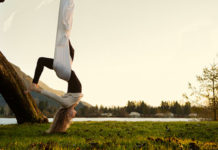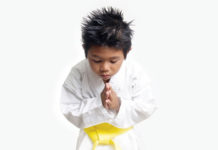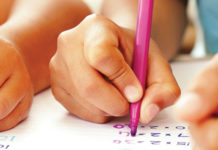
In the daily grind of constant doing, reflection can feel a far way off. Yet, without practising reflection upon what we’re doing, how we’re going about it, and why, that very doing can lose its meaning.
Without reflection, our mental well-being can suffer. Taking time out of our busy lives to sit and think, feel and wonder—about ourselves, our communities, the world around us, and even nothing at all—can help nourish greater balance and health in our lives.
Reflecting upon reflection
To reflect includes to ponder what it is that we do, how we do it, why we do what we do, and the circumstances that led to and surround what we do. Reflection is a form of metacognition—thinking about thinking—which enables us to question and re-evaluate what we feel, value, and assume.
To learn more about the nuances and impacts of reflection, I interviewed Jean Tsai, registered psychotherapist and counsellor at Ryerson University, and Morgan Cowie, founder and director of Mosaic, an inclusive, multidisciplinary yoga and movement centre in Toronto.
For Tsai, to reflect is to savour the pause between doing, to elongate our thoughts and our breathing. When we do these, “information that was once hidden from sight becomes available to us, and we gain insight,” says Tsai. And it’s not just our racing thoughts that slow down; it’s our quickness to judge as well. Through reflection, we can see things more clearly for what they are and disrupt our tendency to see things as good or bad, black or white.
Releasing the rational
To reflect, says Cowie, is to “let go of the idea that there is a single right answer to be unlocked. Instead, reflection is an opportunity to consider the many factors coming to bear.” To do this, suggests Cowie, “Soften to symbolism—tools like the I-Ching, tarot cards, or journalling on particular concepts can help to unlock a reflective flow state. Indulge in meandering curiosity.”
Rearing reflection
Reflection can be enacted through a variety of creative pursuits, says Tsai, as well as “movement-based practices like yoga or tai chi, guided reflection through psychotherapy or coaching, or contemplative practices such as meditation and mindfulness—but this is by no means an exhaustive list!”
Reflection routines
(by Jean Tsai)
- Pause, lengthen the out breath, and tune in to internal noise of thoughts, emotions, and body sensations.
- Commit to a daily practice at a set time each day, and do so for at least three months, even if some days are missed in between.
- Find a community of practice.
- Find daily life pockets of time during which to practise—time spent waiting for the microwave to ding, time spent waiting in line, and time spent during commutes are all opportunities to reflect.
- Have more than one “practice way,” such as cooking, daily meditation, chanting, cleaning, tai chi, or Chinese calligraphy.
There are so many ways to practise, reminds Tsai, and they “all lead to the same place!” Underneath each modality, what unifies reflective engagements is “intentionality and openness,” says Tsai, and “a movement away from the rational and toward the symbolic and intuitive,” notes Cowie.
Reflection as release
Can reflection help our mental well-being? Cowie points out that the bigger picture perspective that results from reflection frees us from being overly critical, competitive, or contracted. It releases us from becoming trapped in our own very specific likes, dislikes, and concerns. “Through reflection, we can start to feel a sense of belonging to a bigness beyond our human minds,” says Cowie.
When we participate in reflection, we can become less reactive and instead make ever clearer and more intentional decisions. As Tsai echoes, “Our collective mental health heals when we pivot away from reactivity and anger toward thoughtful, grounded, well-informed, compassionate action.”
Reflection’s interrelationships
“Reflection,” describes Tsai, “is an essential portal to action rooted in hope and our interconnectedness as it invites us to shed layers, release control, and expand our awareness. We also connect with our best selves, in turn acting in ways that welcome others’ best selves into relationship.” Cowie describes this impact of reflection as making us “softer, and less grippy.”
Reprioritize reflection
In the very real busyness of our daily lives and priorities, how can we make time for reflection? Reflection need not be relegated to an instance or scheduled to-do in your day. “Anytime you are awake,” Cowie says, “you can take or make a moment for reflection. Notice when your thinking is feeling small and restricted. Take a breath, or a stretch, or both.”
“Reflection isn’t a nice-to-do, but an imperative,” urges Tsai. “That said, engaging in reflective practice does not need to be a heavy, burdensome chore. First, choose a modality that best suits your nature. From there, consider ways in which your life could be lived reflectively, rather than reflection being something else that requires doing and fitting in.”
Routes to reflection
(by Morgan Cowie)
These are just a few ways to begin to shift into right-brain, reflective thinking—reflect upon whether you find it fun, refreshing, or intriguing!
- Take a moment each day to point randomly to a word in a news story, then consider why this word might have relevance to your day.
- Promise yourself you will noticeeverything yellow that you see.
- Notice every instance of a particular number.
- Pull a single tarot card.
- Notice something natural and the way it is growing or being.
Deena Kara Shaffer, PhD, is a holistic learning specialist, co-creator of Ryerson University’s Thriving in Action resilience initiative, owner of Awakened Learning, and innovative education speaker and trainer. @deenakshaffer




































